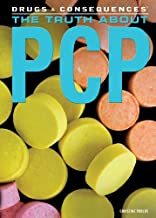Phencylidine
Phencyclidine or phenylcyclohexyl piperidine, also known as angel dust among other names, is a drug used for its mind-altering effects. PCP may cause hallucinations, distorted perceptions of sounds, and violent behavior. As a recreational drug, it is typically smoked, but may be taken by mouth, snorted, or injected.
Cluster Number:
Wiki Number: PW165
Diagnosis: Phencyclidine-PCP Related Disorders
US Patients: 2017-3% used sometime in their lives; 36% moved on into schizophrenia.
World Patients:
Sex Ratio:
Age Onset:
Brain Area: Inhibits hyppocampus, cerebellum with prolonged use leading to memory loss; acts like dopamine in its receptors
Symptoms: Drug “angel-dust” for mind-altering, hallucinations, muted sounds, violent behavior; may have adverse effects or suicide.
Progression: Unpredictable brain-altering in the short term; long-term brain damage often occurred. Resembles a schizophrenic episode.
Causes: used recreationally
Medications: benzodiazopenes for agitation and seizures; antipsychotics
Therapies: None listed.
Youtube Video:
High-resoluton targeted stimulant and phencyclidine (PCP)
Amazon or Library Book: The Truth About PCP
Click the book to link or order from Amazon.

